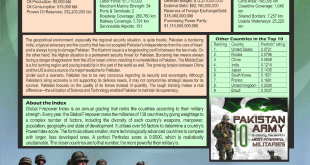Introduction
The First World War (WWI) was a global war centered in Europe. Breaking out on 28th July 1914, with the assassination of the Archduke Franz Ferdinand of Austria and his pregnant wife Sophie, the war spanned exactly four years, three months and 14 days and ended on 11th November 1918. Including almost all the big powers of the world, 135 countries took part in the war that consumed the lives of more than 15 million people. The Spanish flu also caused about a third of total military deaths during the war.
Combatants
The WWI involved two opposing alliances, i.e. the Allies and the Central Powers. The Allies included Russia, France, British Empire, Italy, United States, Japan, Romania, Serbia, Belgium, Greece, Portugal and Montenegro whereas the Central Powers consisted of Germany, Austria-Hungary, Turkey and Bulgaria.
Principal Cause
Archduke Franz Ferdinand, whose assassination triggered this global war, was the nephew of Emperor Franz Josef and heir to the throne of Austria and Hungary. The assassination was planned by a Serbian terrorist group, The Black Hand. The man who shot Franz Ferdinand and his wife was a Bosnian revolutionary named Gavrilo Princip. A primary cause of WWI was the difference over foreign policy. Although the assassination of the Archduke triggered WWI, that was only the immediate cause; differences over foreign policy between the major world powers were the principal underlying cause of the war.
Other Causes
There were several other causes as well. These included: a tangle of alliances that was made between countries in order to maintain a balance power in Europe brought about the scale of the conflict; the Bosnian Crisis where Austria-Hungary took over the former Turkish province of Bosnia in 1909 angering Serbia; countries were building their military forces, arms and battleships; countries wanted to regain lost territories from previous conflicts and build empires; and the Moroccan Crisis where Germans were protesting in 1911 against the French possession of Morocco.
America’s Entry
In 1915, a British passenger ship ‘Lusitania’ was sunk by a German submarine. In all, 1,195 passengers, including 128 Americans, lost their lives in this incident. The people in the United States were enraged and they put pressure on the US government to avenge this attack by entering the war. The then US President Thomas Woodrow Wilson wanted a peaceful end to the war but, in 1917 when the Germans announced that their submarines would sink any ship that approached Britain, Wilson declared that America would enter the war and restore peace to Europe. Hence, the US entered the WWI on April 6, 1917. The US remained a part of the actual combat for only seven and a half months but during this brief time, nearly 116,000 of its troops were killed and 204,000 were wounded.
Casualties and Losses
During the WWI, nearly 65 million troops were mobilized out of which 8 million troops died and 21 million were wounded. As many as 58,000 British soldiers lost their lives on the first day of the Battle of the Somme. Chemical weapons were first used in World War I. The chemical was mustard gas. In the Battle of Verdun in 1916, there were over a million casualties in ten months.
Read More: Driving the world towards a trade war
Germany Wearied
By 1918, German citizens were holding strikes and demonstrations against the war. The British navy blocked German ports which left thousands of Germans starved and the country’s economy on the brink of collapse. Adding fuel to the fire, the German navy suffered a major mutiny. After German Emperor Kaiser Wilhelm II abdicated on 9th November 1918, the leaders of both sides met at Compiègne, France. The peace armistice was signed on November 11th. By the end of the War, four empires – the Russian Empire, the Ottoman Empire, the German Empire, and the Austro-Hungarian Empire – had collapsed because of the stretched combat.
The War Ends
In 1919, the Treaty of Versailles officially ended the WWI. The Treaty required that Germany accept full responsibility for causing the war; make reparations to some Allied countries; surrender some of its territory to surrounding countries; surrender its African colonies; and limit the size of its military. The Treaty also established the League of Nations to prevent future wars. The League of Nations helped Europe rebuild. Fifty-three nations had joined it by 1923 but the US Senate refused to let the United States join the League, and as a result, President Wilson, who had established the League, suffered a nervous collapse and spent the rest of his term as an invalid. Germany joined the League of Nations in 1926, but many Germans were very resentful of the Treaty of Versailles. Germany and Japan withdrew from the League of Nations in 1933. Italy withdrew three years later. The League of Nations was unable to stop Germans Italians and Japanese from expanding their power and taking over smaller countries.
Some Interesting Facts
1. Most of the WW1 was fought in mud and trenches, but a group of miners would also dug underground tunnels and detonate mines behind the enemy’s trenches. In Messines Ridge in Belgium, these miners detonated over 900,000 pounds of explosives at the same time, destroying the German front+line. The explosion was so loud and powerful that it was heard by the British Prime Minister David Lloyd George, 140 miles away in 10 Downing Street.
2. One of the earliest examples of plastic surgery came during World War I when a surgeon Harold Gillies helped shrapnel victims with terrible facial injuries. Shrapnel caused many facial injuries in WW1 and the twisted metal would inflict far worse injuries than the straight-line wounds of a bullet. Dr. Gillies pioneered the early techniques for facial reconstruction.
 Jahangir's World Times First Comprehensive Magazine for students/teachers of competitive exams and general readers as well.
Jahangir's World Times First Comprehensive Magazine for students/teachers of competitive exams and general readers as well.



